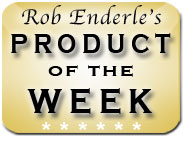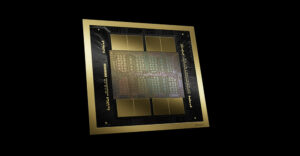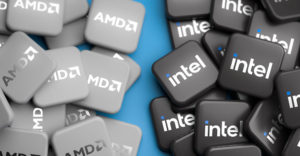
If you look back at what Steve Jobs did, he took a hard look at Porsche and Sony, and then he effectively built a better Sony. As Apple’s star rose, Sony’s star crashed, but Jobs never targeted Sony directly. He just figured out what Sony wasn’t doing right, and he did that extremely well while Sony lost its way.
He didn’t copy Sony’s products, he copied its mission. He then used Porsche-like concepts — simplicity, focus, high quality — to rebuild what once had been an amazing company into a far better one. Lenovo is looking at both Apple and Samsung, and it’s moving to create a company that could eclipse both by taking the best parts from each. I’ll share my thoughts about that this week.
I’ll end with my product of the week, which is steeped in irony because it is the best thin client ever created. Given thin clients were created to put companies like Dell out of business, the irony is that it is from Dell. Go figure.
Steve Jobs
Steve Jobs is one of the most documented CEOs in history. There are books not only on his life, but also on his unique practices for both management and presentation. Over the years, I’ve read and reviewed a large number of them, and there is clearly enough information out there to actually turn yourself into a Steve Jobs-like CEO. Part of what you’ll learn is that Jobs himself was built.
He started out as a drug-using kid who didn’t take baths, cried when he didn’t get his way, refused to flush toilets, or wear underwear to become — at least in public, because privately he didn’t change that much — the suave, smart, CEO you saw on TV and events.
Some things clearly couldn’t be taught — like his passion for products and quality, and his drive for details. Those were built into his DNA, but all the rest was learned. The information is out there for others to learn it, too. By the way, the two books to start with are by Carmine Gallo, who focused most on the mechanisms of Steve Jobs’ Success. Here is a slideshow on his first book.
Now, Steve had major weaknesses. He was very insecure. He didn’t like talking to media, he had a nasty temper — and, well, a lot of the stuff I glossed over above detracted from his image. In theory, you could create a better Steve Jobs — at least with regard to his product creation-presentation skills — by finding someone with similar passions but without the personality flaws.
That’s what Lenovo is trying to do with Ashton Kutcher. He won’t run Lenovo, but he could become its public face and do what currently isn’t being done at Apple. He could do what Steve did: create magic.

Steve Jobs’ Playbook
Steve Jobs modeled the rebuilding of Apple on two firms, both of which he admired. They were Sony and Porsche, which is kind of ironic, because I believe he drove a Mercedes Benz. Sony built consumer-focused products and had attempted to provide an end-to-end solution as the only company that had a movie/record studio; manufactured content production equipment; and sold TVs, Radios, Tape, DVD and CD products to play it. Sony had all the parts to dominate the consumer electronics industry, but its execution was hampered because it lost focus on the customer.
Porsche then was the firm, at least with cars, that appeared most focused on their customer. It had comparatively few very well-built cars, and they sold at high margins. Porsche maintained high customer satisfaction through engagement, great products and generally great service. Porsche drivers are some of the most loyal in the auto industry.
So, the playbook calls for a target company and another firm that serves as a way to make the target company’s model more successful. What Lenovo appears to be attempting is to build an Apple-like company with Samsung’s unique advantages.
Wrapping Up: Lenovo’s Strategy
By buying both Motorola and IBM’s server business, Lenovo has a potential end-to-end solution that exceeds Apple’s. It currently is a thin-margin company closer to Samsung, and it has in-house manufacturing like Samsung. This makes Lenovo simpler, but with the same economic advantages that Samsung has.
It gives Lenovo more reach — Apple failed at servers — and more control over the solution, with one exception: software. Still, it is working to create a unique customer experience with both Windows and Android.
If Lenovo is successful, it will end up with a better-focused Samsung-like company with Apple brand and marketing advantages. David Roman, Lenovo’s near-legendary CMO, came from Apple. Lenovo also could be the only firm with a Steve Jobs-like pitchman. Ashton Kutcher is currently husbanding his first line of tablets through the creation process, and I’ll bet he picks up phones shortly.
There are a lot of ifs in this story, but that also was true of Apple at the end of the 1990s. If Lenovo pulls this off, it will be amazing — and we’ll be asking why Apple didn’t do this, much like we asked why Sony didn’t get what Apple did.
Product of the Week: The Dell Wyse Cloud Connect Client

Thin-client computers were created by Larry Ellison and Scott McNealy (Oracle and Sun) to kill companies like Dell, so it is ironic that those efforts failed and Dell now owns what was the largest independent thin client computing company in the world — Wyse. its latest offering, the Wyse Cloud Connect Client, is so amazing, it’s almost magical.
It is basically an Android tablet on a USB stick-like device that plugs into the HDMI port of a monitor or TV. It is wireless to the network and uses Citrix to provide a full Windows desktop. So, in one little device, you get access to all of the Android apps and the ability to run Windows apps as well — granted, through your IT department and in a much more secure fashion.

If your company wants to deploy this, it links back to Dell’s management suite. It anticipates more touchscreen monitors, and it prefers one of the new HDMI MHL ports, so it can be powered off the port rather than a USB cord. With that port and Bluetooth keyboard and mouse, you have a PC — and this one is truly an appliance.
As we move to 4K TVs, using TVs as PC monitors undoubtedly will become more common, and connecting this client to back-end servers — like Nvidia’s grid for gaming and workstation-like projects — far more common. At under $130, I think the Dell Wyse Cloud Connect Client is revolutionary and the last laugh of Michael Dell at those who thought thin clients would put him out of business, so it is my product of the week.
Amazing job, folks — though you need to work on the acronym. I can’t pronounce “DWCCC,” as it kind of sounds like Klingon. Klingons apparently hated vowels.






















































